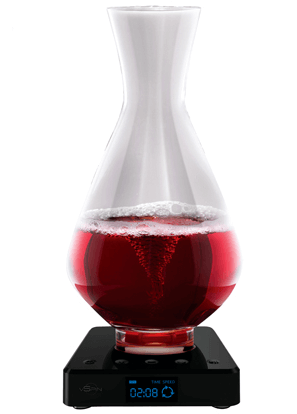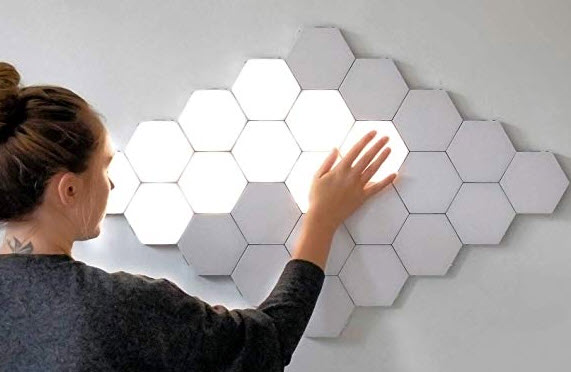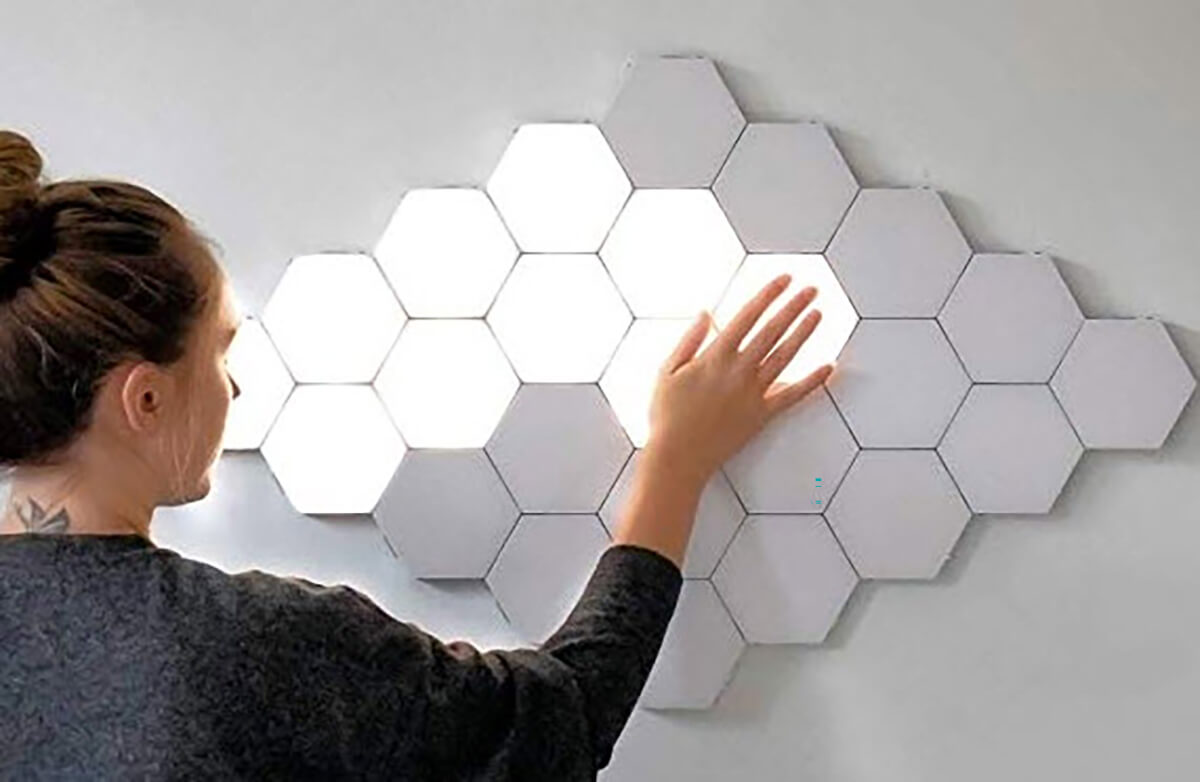Capacitive touch sensors are found in many of our electronic devices, seamlessly integrated into our smartphones, tablets and other products that feature touch screens. These sensors enable intuitive and responsive touch interactions. Products that utilize capacitive touch sensors are becoming more popular in many industries, like automotive and medical. But what exactly are capacitive touch sensors, and how do they work?
Capacitive touch sensors are electronic components that detect and respond to touch inputs by measuring changes in capacitance (the ability to store an electric charge). Unlike resistive touch screens, which rely on pressure to register input, capacitive touch sensors detect changes in the electrical charge of conductive materials, such as the human body. When a finger or conductive object touches the surface of a capacitive touch sensor, it disrupts the electrostatic field, causing a change in capacitance. This change is then measured and interpreted by the sensor’s electronics, enabling precise and reliable touch detection. Capacitive touch sensors are known for their sensitivity, accuracy and responsiveness, making them ideal for a wide range of applications, from smartphones and tablets to industrial controls and interactive kiosks.
How Does a Capacitive Sensor Work?
Capacitive sensing technology works by measuring the change in capacitance within its projected field due to the presence of a conductive object. That object is typically a human finger, but it could be any conductive object that has a dielectric different from air.
Benefits of Capacitive Touch Sensors
Due to their improved reliability over mechanical switches, capacitive touch sensors have many advantages that benefit end users, especially in extreme environments. They include:
- Durability: Capacitive touch sensors are solid-state devices with no moving parts, making them resistant to wear and tear. They are designed to withstand frequent use and are less prone to mechanical failure compared with mechanical switches or buttons.
- Longevity: Capacitive touch sensors have a long lifespan, often lasting millions of touch cycles without degradation in performance. This ensures reliable operation over an extended period, making them suitable for use in various applications, including consumer electronics, industrial controls and automotive interfaces.
- Immunity to Environmental Factors: Capacitive touch sensors are immune to environmental factors such as dirt, dust, moisture and oil, which can affect the performance of mechanical switches or buttons. This reliability ensures consistent operation under challenging conditions.
Backlighting and Haptic Integration
Backlighting and haptic integration are two features that can significantly enhance the user experience of capacitive touch sensors, and they have several advantages.
Advantages of Backlighting
- Enhanced Visibility: Backlighting provides illumination behind the touch panel, making it easier for users to see and interact with the display, especially in low-light conditions or dark environments.
- Visual Appeal: Backlighting adds aesthetic appeal to the user interface (UI), creating a sleek and modern appearance. It allows for the customization of colors and brightness levels to match the design aesthetic or branding requirements.
- Visual Feedback: Backlighting can be used to provide visual feedback to users, such as highlighting active buttons or indicating status changes. This enhances usability and helps users navigate the interface more intuitively.
Advantages of Haptic Integration
- Tactile Feedback: Haptic feedback provides tactile sensations or vibrations in response to touch inputs, mimicking the feel of mechanical buttons or controls. This tactile feedback enhances the user experience by providing confirmation that the input has been registered.
- Improved Usability: Haptic feedback makes touch interfaces more intuitive and user-friendly by providing tactile cues that help users navigate menus, scroll through content or interact with virtual buttons and controls.
- Enhanced Realism: Haptic feedback can enhance the realism of virtual interactions by simulating the tactile sensations associated with real-world objects. This creates a more immersive and engaging user experience, particularly in gaming and virtual reality applications.
- Reduced Errors: Haptic feedback can help reduce input errors by providing tactile confirmation when a touch input is registered. This helps users avoid accidental touches and improves overall accuracy and precision.
Easy Wipe-Down and Cleaning
Because they are sealed and have smooth, nonporous surfaces, capacitive sensor touch screens are easy to wipe down without trapping dirt, debris or cleaning products. They are also resistant to most common cleaning agents used in homes and hospitals.
Modern Aesthetics
The inherently enclosed design of capacitive touch screens lends itself to a contemporary appearance that many consumers expect. Capacitive touch screens offer:
- Sleek Design: Capacitive touch screens are typically designed with slim profiles and minimalistic aesthetics, contributing to a sleek and contemporary look.
- Edge-to-Edge Display: Many capacitive touch screens feature edge-to-edge displays with thin bezels, maximizing the screen-to-body ratio and creating a seamless, immersive viewing experience.
- High-Resolution Graphics: Capacitive touch screens support high-resolution graphics and vibrant colors, allowing for crisp and clear images.
- Customizable Interfaces: Capacitive touch screens offer flexibility in designing user interfaces, allowing for customization of layouts, graphics and interactive elements to match the branding or design aesthetics of the product or application.

Advantages of Capacitive Touch Sensor Technology
In the past, manufacturers stayed away from non-tactile technologies, thinking the user required feedback to know there was an actuation. However, with the proliferation of these technologies, consumers have not only adapted to but anticipate their use in a broader range of devices.
No Moving Mechanical Components
The beauty of capacitive touch sensors from a durability perspective is that they do not have any moving parts or mechanical components, meaning there is less chance of failure. These types of devices are very clean looking with minimal crevices and openings, which reduces dirt and dust while also protecting against moisture. The flat surface also makes regular cleaning easier, which is especially beneficial in medical settings.
Thinner Stack-Up
Capacitive sensors typically have thinner stack-up, or height, compared with other mature user-interface (UI) technologies like membrane switches. This gives the product a sleek, elegant and compact design. Since these switches eliminate many design layers and components from the circuitry, the cost of the technology is very competitive.
Design Flexibility
Early development of capacitive switches utilized printed circuit boards (PCBs), and the design possibilities have expanded by employing flexible printed circuits (FPCs) made from copper. This allows designers to utilize the technology in novel ways.

Integrating Capacitive Touch Sensor Technology
There are many ways to integrate capacitive touch technology into your new product design. Often the simplest and most cost-effective approach is laminating a printed conductive layer to the underside of your touch surface. This can then be linked to a touch microcontroller.
This technology is not limited to flat surfaces. Thin, flexible circuits can conform to a variety of shapes and geometries, allowing touch-sensitive surfaces to fit in areas that would not be feasible with traditional switches. If you consider insert molding or over-molding, touch-sensitive surfaces can be encapsulated in injection-molded plastics, providing protection and simplifying final integration.
Can Capacitive Touch Sensors Be Integrated with Other Technologies?
Yes, capacitive touch sensors can be integrated with other technologies, such as gesture recognition and force sensing, to enhance their functionality and expand their capabilities. Here’s how these integrations work:
- Gesture Recognition: Capacitive touch sensors can be combined with gesture recognition technology to detect and interpret specific hand movements or gestures made on the touch surface. This allows users to interact with devices using intuitive gestures, such as swiping, tapping, pinching or rotating, without the need for physical buttons or controls. Gesture recognition can be implemented using software algorithms that analyze the capacitance data captured by the touch sensors to identify and interpret different gestures.
- Force Sensing: Capacitive touch sensors can also be integrated with force-sensing technology to detect the amount of pressure or force applied to the touch surface. This enables devices to respond differently based on the intensity of the touch input, allowing for pressure-sensitive interactions and applications. Force sensing can be implemented using specialized sensors or by analyzing changes in capacitance caused by variations in pressure on the touch surface.
Factors Influencing Design and Performance
A primary goal in designing capacitive touch sensors is to minimize external noises and enhance the signal strength for better performance. External interferences can potentially lead to false triggers and actuations or prevent the touch from being registered, which can affect the performance and function of the device.
The most common design concerns include water or moisture presence, temperature variations, gloved hands and external noise (from fluorescent lamps, electronic devices, etc.). It is the interaction of internal and external factors that eventually will dictate the design and performance of each capacitive device.
Applications of Capacitive Sensing Technology
An increasing number of products are integrating capacitive touch controls. Industries such as medical, automotive, consumer electronics, appliances, aerospace and industrial controllers continue to focus on integration.
Common applications of capacitive touch technology include smartphones, trackpads and tablets, to name just a few everyday examples you probably have used.
The size limitations of capacitive touch screens depend on various factors, including manufacturing capabilities, technological constraints and practical considerations. While there is no strict size limit, larger capacitive touch screens may face challenges such as increased cost, reduced sensitivity and engineering constraints. Larger capacitive touch screens may have reduced sensitivity and accuracy compared with smaller screens. This is because the capacitance changes caused by touch inputs become smaller relative to the overall capacitance of the panel, making them more challenging to detect accurately.
To learn more about these touch sensors, head over to our Touch Screen Manufacturing Capabilities page for more information.
Top Capacitive Touch Sensor Manufacturer
Looking for a capacitive sensor manufacturer for your next project?
With over 60 years of experience in the industry, RSP, Inc. is uniquely positioned to assist with the design, prototyping and manufacturing of capacitive touch sensor projects. Our comprehensive suite of services, including touch screen development, plastic molding, metal fabrication and full turnkey assembly, allows us to provide end-to-end solutions tailored to our clients’ needs. Whether you’re looking to create a cutting-edge touch interface or require assistance with other manufacturing needs, RSP’s expertise and dedication to quality ensure that your project is in capable hands. Contact us today to learn more about how we can bring your vision to life.

